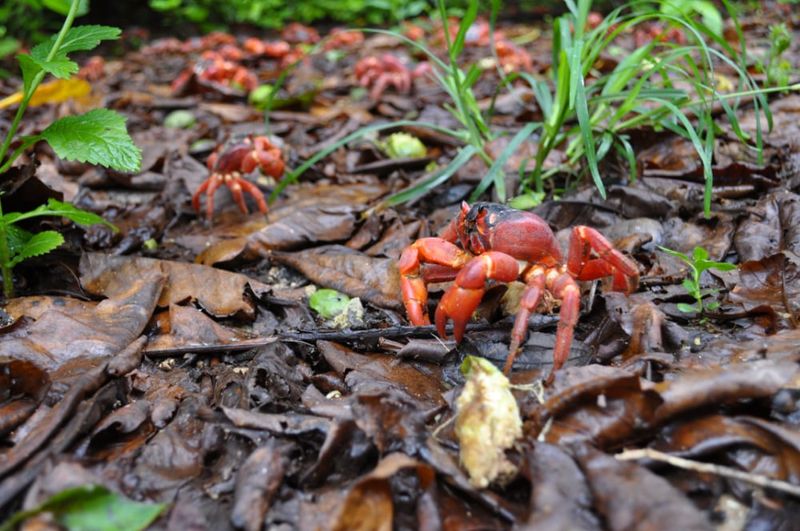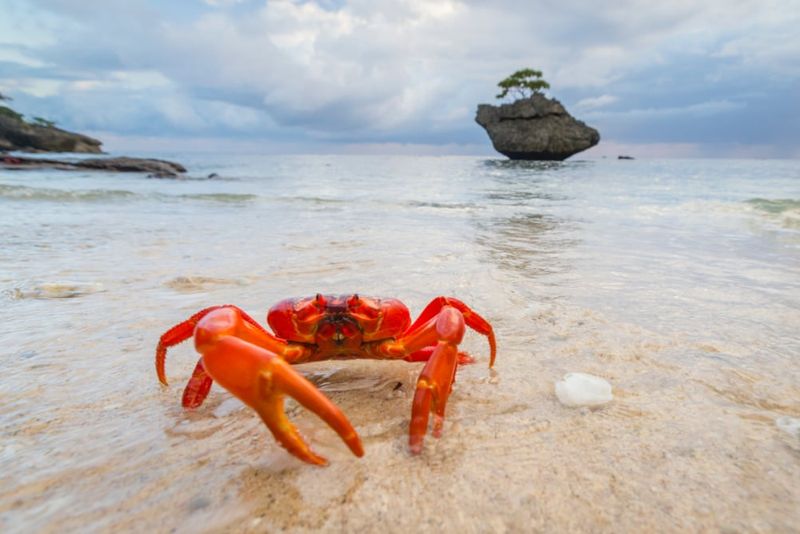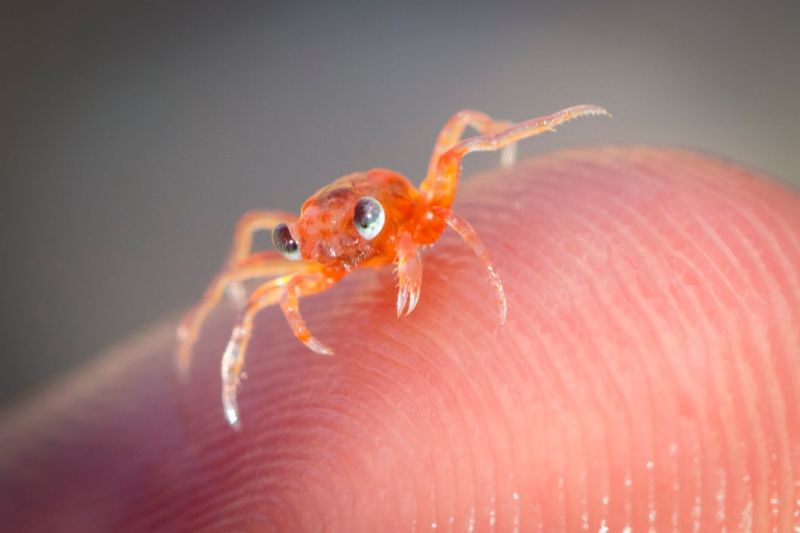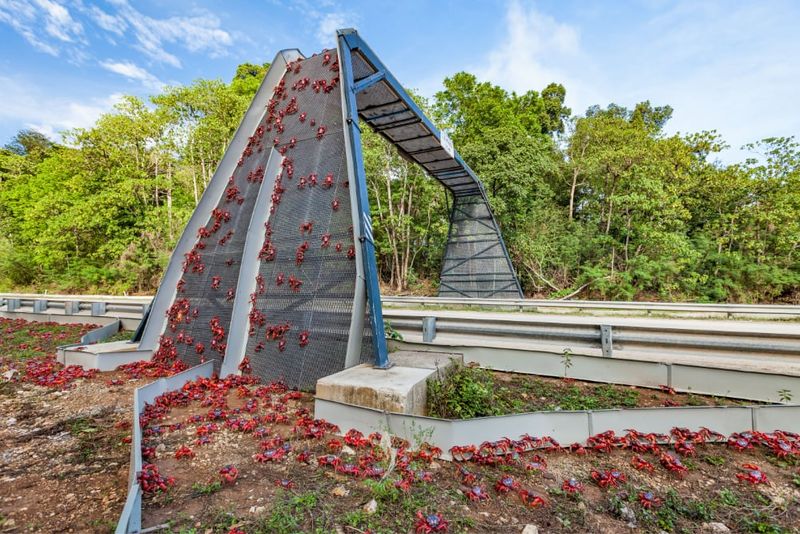Red crab migration
Christmas Island’s mass red crab migration is one of the most incredible natural processes on Earth.
Every year, millions of these large crabs emerge from the forest and make their way to the ocean to breed, swarming across roads, streams, rocks and beaches.
It’s a truly spectacular sight that world-renowned naturalist Sir David Attenborough described as one of his greatest TV moments.
When does the red crab migration occur?

The migration starts with the first rainfall of the wet season. This is usually in October or November, but can sometimes be as late as December or January.
Red crabs all over the island leave their homes at the same time and start marching towards the ocean to mate and spawn. Male crabs lead the migration and are joined by females along the way.
The exact timing and speed of the migration is determined by the phase of the moon. Red crabs always spawn before dawn on a receding high-tide during the last quarter of the moon. Incredibly, they know exactly when to leave their burrows to make this lunar date.
However, because crabs wait until the first rainfall to start their trek, they sometimes have to hurry. If the rains arrive close to the optimal spawning date, they will move rapidly. But if the rain comes early they may take their time, stopping to eat and drink on their way to the coast.
If it begins raining too late to make the spawning date, some crabs will stay in their burrows and migrate the following month instead.
Mating

The larger male crabs usually arrive at the sea first but are soon outnumbered by females. After their arduous journey from the plateau, the crabs take a dip in the sea to replenish moisture.
Next, the male crabs retreat to the lower terraces of the island to dig burrows. The huge number of crabs means burrows are very close together, and males will often fight each other for possession of a burrow.
The female crabs then join the males on the terraces to mate in or near the burrows. After mating, male crabs have a second dip in the sea before starting their journey back home.
Spawning

The female crabs stay behind in the moist burrows. They produce eggs within three days of mating and will remain in the burrows for about another two weeks as the eggs develop,
Each female crab can produce up to 100,000 eggs, which she holds in a brood pouch.
When the moon reaches its last quarter, the egg-laden crabs leave their burrows and amass on the shoreline, packing into shady spots above the waterline. In some areas you might see up to 100 crabs per square metre of beach or rock.
When the high tide starts to turn before dawn, the crabs move into the sea and release their eggs before returning to the forest. Spawning may occur on 5–6 consecutive nights during the migration.
Hatching and the return of the baby crabs

Red crab larvae hatch from the eggs as soon as they make contact with the water. Clouds of larvae swirl near shore before being taken out to sea by waves and the receding tide.
They grow through several larval stages over the next month, eventually developing into prawn-like animals called megalopae. The megalopae gather in pools close to the shore for one or two days until they become fully formed baby crabs and emerge from the water.
Measuring about 5 mm across, the tiny crabs begin marching inland, taking around 9 days to reach the safety of the plateau. There they will stay hidden in rocky outcrops and forest debris for the first three years of their life.
However, the vast majority of larvae never make it out of the water – instead they are eaten by fish, manta rays, and the enormous whale sharks that visit Christmas Island to take advantage of this annual feast.
Most years, no or very few baby crabs will emerge from the sea at all. But once or twice a decade, a huge number will survive, which is enough to maintain the island’s large red crab population.
Watching the red crab migration

The red crab migration is Christmas Island’s biggest tourist attraction, drawing nature-lovers from all over the world.
The easiest places to watch the migration and spawning are Drumsite, Flying Fish Cove, Ethel Beach and Greta Beach.
To protect our red crabs, some sections of roads may close for part or all of the day during the peak migration time, often at short notice. But you can park your car and carefully walk among the sea of moving crabs as they make their way to and from the beach.
You will also see crab bridges built over the roads. These are great places to stand and watch the flow of crabs.
Public notice boards and local radio provide updates on crab movements during the migration. Please follow all signs and the advice of national park staff.
Video highlights
Delve into the journey of Christmas Island's red crabs and the rangers keeping them safe. This footage captures the annual migration in detail, showcasing thousands of red crabs as they make their remarkable journey from the forest to the sea. Watch and discover the mating rituals and how the crabs grow up on the island.

